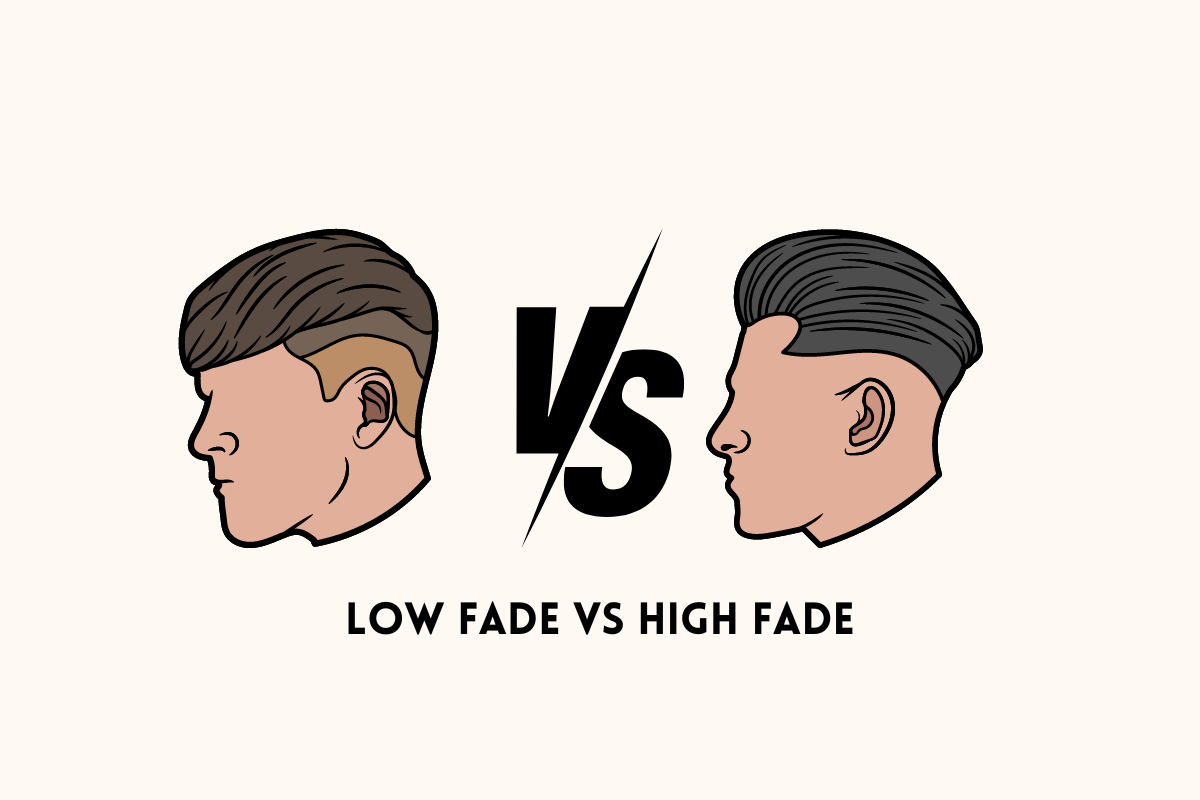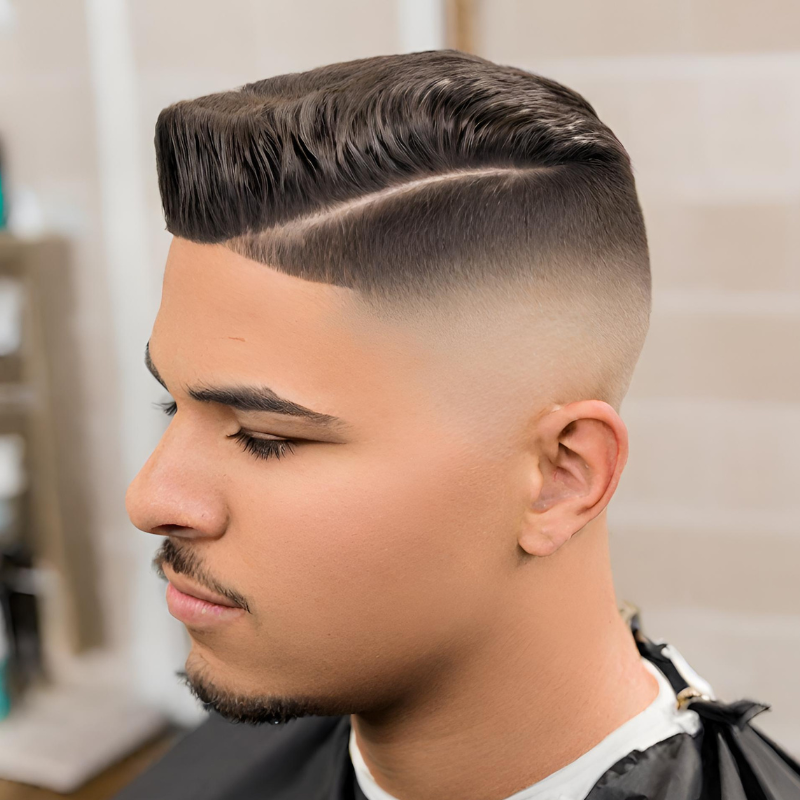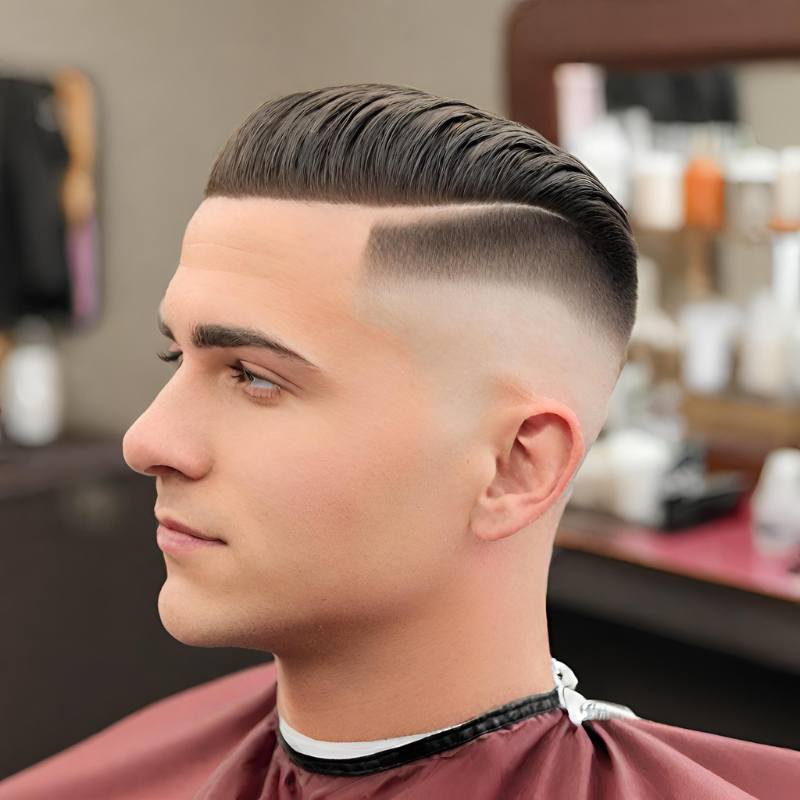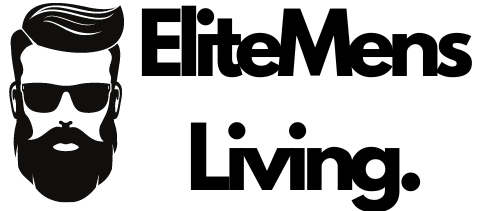Low Fade vs High Fade: Which Haircut Suits You Best?

Men prefer the fade haircut because it offers a clean, sharp look that’s both modern and timeless. A fade haircut changes gradually from short at the bottom to longer at the top, giving a smooth transition that highlights the shape of your head and face.
Low fades start lower on your head, near the ears, and blend up into longer hair more subtly, while high fades begin higher up and make a bolder statement.
Read the full guide for a detailed comparison between low-fade and high-fade haircuts to find the perfect style for you.
Low Fade Haircut

A low fade haircut is a style where the hair on the sides and back of your head gets shorter gradually as it moves down toward your neck. It starts low, just above your ears, blending into longer hair on top smoothly.
This type of fade is subtle, making it a great choice if you want a hint of style without a dramatic change.
This haircut suits many because it works well with different hair types and lengths.
Whether your hair is curly, straight, or somewhere in between, a low fade can add a clean, polished look to your overall style. It’s also perfect for keeping things professional, as it’s not too flashy but still shows off your sense of style.
What do I Tell My Barber for a Low Fade?
When you sit in the barber’s chair for a low fade, start by saying you want a low fade. Make it clear the short part should start just above your ears. That way, your barber knows exactly where to begin the fade. It’s all about where the short part starts.
Then, tell your barber how long you want the hair on top. It can be short, long, or anything in between. Share how you like to style your hair, like to the side or straight back. This helps your barber cut it in a way that matches how you style it every day.
If you have a photo, show it. Photos make it easier to show what you want. Also, if you’re not sure what’s best for your face shape or hair, ask your barber.
What size is a low fade?
A low fade starts with very short hair near the ears, sometimes almost shaved, and gradually gets longer as it goes up the head. The exact size at the start can be as short as you like, often using a clipper set to a very low number, like a 0 or 1. As it moves up, the hair blends into the longer hair on top of your head.
what does a low fade look like
A low fade haircut has very short hair at the sides and back, starting just above the ears, and gets longer as it moves up towards the top of your head.
The change from short to long is smooth, making the short part not too noticeable. It looks tidy, blending the hair in a way that it’s short near your neck and ears but longer on top.
High Fade

A high fade haircut is where the hair on the sides and back of your head starts to get shorter high up, near the top of your head. It quickly becomes very short as it goes down towards your ear and neck. This style creates a sharp contrast between the top of your hair, which is left longer, and the sides.
This haircut stands out because it draws more attention to the style on the top of your head by making a clear, bold line where the hair starts to fade. It’s perfect for you if you like a more noticeable, edgy look. High fades work well with lots of hair types and styles, whether you have it slicked back, in a pompadour, or any other way.
What do I Tell My Barber for a High Fade?
When you’re ready for a high fade, tell your barber straight up, I want a high fade. Make sure they know you want the fade to start high on the head, creating a sharp contrast with the top.
Discuss the length you prefer for the top of your hair. It could be anything from very short to quite long. Let them know how you usually style your top hair, whether it’s combed neatly or worn loosely.
If you’ve got a picture that captures the style you’re after, show it to them. A picture can be a big help in making sure you both have the same style in mind.
What size is a High fade?
A high fade starts with very short hair at the top of your sides and back, often using a clipper set to a low number like 0 or 1. The fade then blends into longer hair as it moves a short distance up your head towards the top.
Which is Best for You
Both cuts are trendy and can be tailored to fit your look. Think about what you like, your daily activities, and how much time you want to spend styling your hair.
Low Fade
A low fade is subtle. It blends your hair slowly from short at the bottom to longer at the top. This style is good if you want something that doesn’t shout for attention but still looks sharp. It’s great for professional settings or if you prefer a classic look. Low fades are easier to maintain and don’t need as much styling every day.
High Fade
A high fade makes a statement. It starts high up on your head, creating a bold contrast between the sides and the top. If you like a standout look or want to highlight the styling on the top of your head, this is for you. High fades might need more care to keep the style looking its best.
FAQ
1. What’s the main difference between a low fade and a high fade?
The main difference lies in where the fade starts. A low fade begins just above the ears, blending up into longer hair subtly. A high fade starts higher on the head, near the temples, offering a more dramatic look due to the stark contrast between the short sides and longer top.
2. Which fade is better for a professional setting?
A low fade is generally considered more suitable for professional settings due to its subtler appearance. It maintains a clean, neat look without being too bold or drawing too much attention.
3. How often will I need a haircut to maintain a low fade or a high fade?
Both fades require regular maintenance to keep their sharp look. Typically, visiting your barber every 2 to 4 weeks is recommended, depending on how quickly your hair grows and how crisp you want the fade to remain.
4. Can both low and high fades work with different hair types?
Yes, both low and high fades can be adapted to suit various hair types, including straight, wavy, curly, or coily hair. Your barber can adjust the fade to complement your hair’s natural texture and volume.
5. Are low or high fades better for thinning hair?
Low fades can be more flattering for thinning hair, as they offer a more gradual transition that can help blend in thinner areas more subtly. High fades might expose more of the scalp on the sides, which could highlight thinning areas depending on the hair’s length and style on top.
